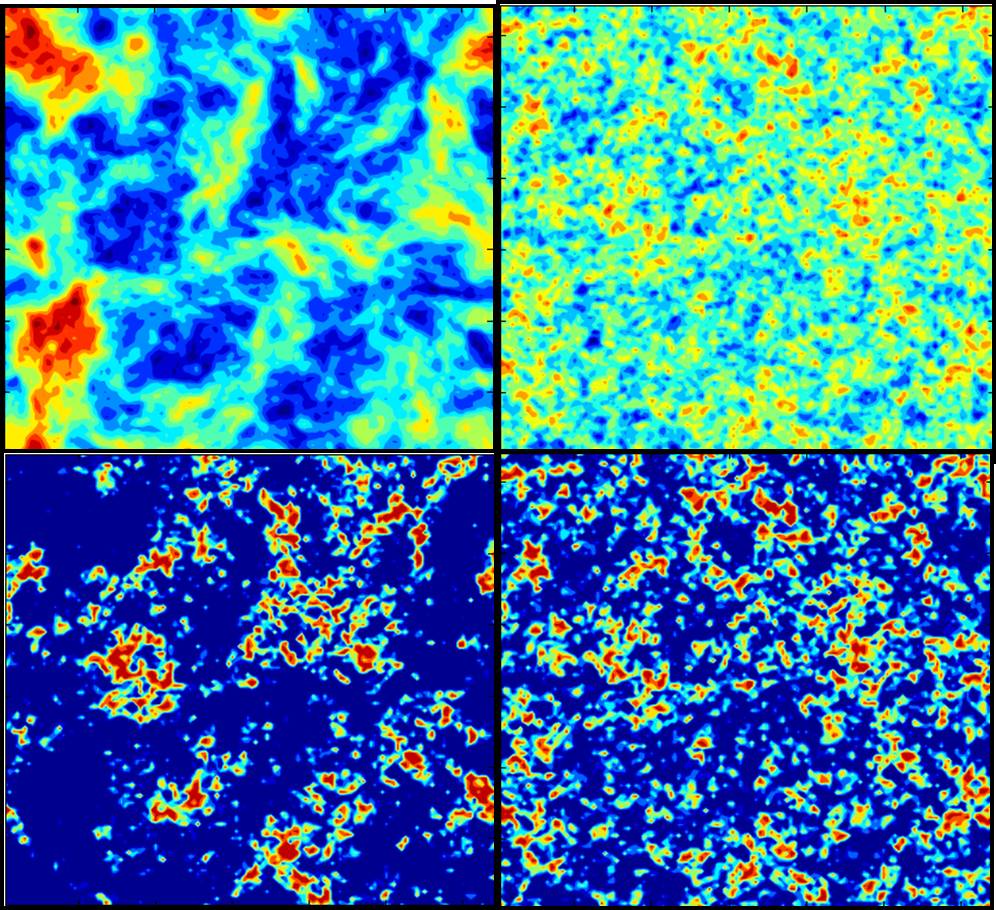Research
Being especially fascinated by our Universe when it was young, I am interested in any aspects of this remote era. My research to date spans a wide range of times, from the period when the initial conditions for cosmic structure formation were created (during inflation) to the epoch when these seeds grew into the first stars.
During my Ph.D. I focused on the following projects:
Fluctuations in the 21-cm signal from the first stars
(read more).
Impact of the relative motion between the dark matter and the baryons on the first stars
(read more).
Pre-inflationary relics and their cosmological imprints
(read more).
Relative velocity between dark matter and gas and its impact on the first stars

box. (Top left) velocity, (top right) density, (bottom left)
stars with velocities, (bottom right) stars without velocities.
The illustration is taken from Visbal, Barkana, Fialkov,
Tseliakhovich & Hirata, Nature (2012).
In the early Universe, dark matter and gas moved at different velocities as was recently shown in Tseliakhovich & Hirata (2010). The relative motion is supesonic at high redshifts (Mach number ~5 right after recombination) and has a coherence scale of several Mpc. These high velocities have a surprisingly large effect on structure formation, in particular on the gravitational collapse of light objects with masses up to 107 solar masses and on the formation of the stars at high redshifts up to z ~ 20. These large-scale flows suppress halo abundance, suppress halo baryon fraction and boost the minimal halo mass needed for star formation. The magnitudes of the relative velocities are random on large scales which leads to a spatially-variable effect on star formation.
The first stars are expected to be highly clustered. To allow star formation at high redshifts, the local density needs to be high enough which happens only in small portion of the sky at high redshifts. The relative velocity plays a role of an additional bias for star formation. In Fialkov, Barkana, Tseliakhovich & Hirata (2012) we use semi-analytical methods to study the impact of the relative velocities (together with density fluctuations) on the distribution of the star-forming halos at high redshift and on the formation time of the very first star. To model the collapse itself in the presence of the relative motion we use the results of recent small-scale numerical simulations (more in Fialkov et. al. (2012) and references within) that found that the relative velocity substantially increases the minimum mass of a halo in which stars can form. We find that the primordial star formation is confined to the regions with low relative velocities. For instance, at z = 40, 68 per cents of stars were formed in 18 per cents of the space. We also find that the first star formation was delayed by 3.6 million years due to the velocities and that the very first star was formed when the Universe was about 33 million years old.
Back to Research
